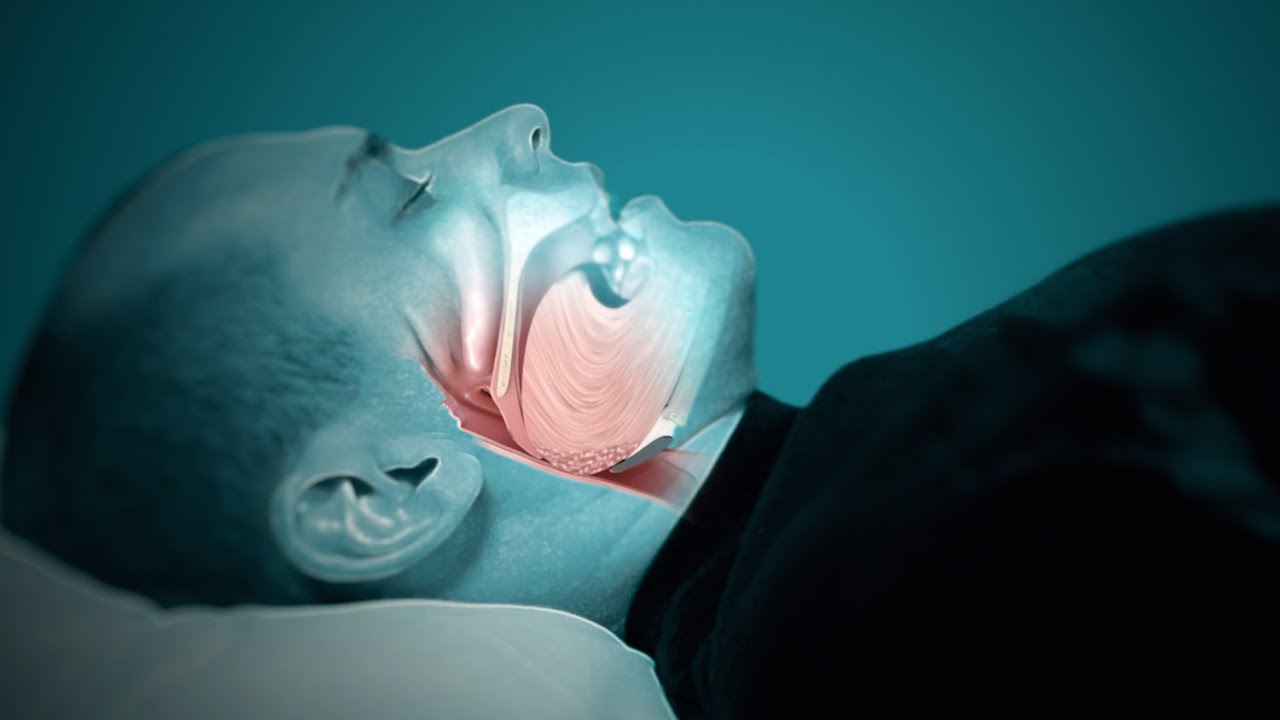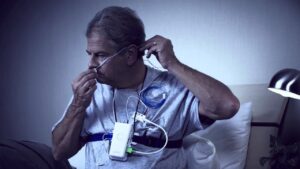What is obstructive sleep apnea?

If you have trouble breathing during sleep, it is very likely that you have obstructive sleep apnosis. You may have difficulty breathing during sleep, and you may have difficulty focusing on tasks at work. To learn more about this condition, read this article to find out what it is, how to spot the symptoms, and what treatment is available. In this article, you will learn about the causes and symptoms of obstructive sleep apnea and how to treat it.
Symptoms
You may have heard that obstructive sleep apnosis is preventable, but there are some things you should avoid to get enough rest. These symptoms include snoring and feeling drowsy during the day. You should discuss these symptoms with your healthcare provider. If you suspect that your sleep is disrupted, you can get a sleep study.
Obesity may increase the risk of obstructive sleep arousal, as excess weight can obstruct the airway during sleep. People with excess weight are six times more likely to develop OSA than thin people. The risk is even higher in people with a thick neck. The apnea symptoms may vary depending on the cause of the problem.
While most people with obstructive sleep apnosis do not know they have it, they may experience shortness of breath, gasping, and snoring at night. Additionally, they may wake up drowsy after periods of inactivity. If these symptoms persist, your doctor may recommend a sleep study or a polysomnogram. This sleep study will help determine the severity of the disorder and make the right treatment decisions.
The main symptom of obstructive sleep arousal is loud snoring, although a few other conditions can cause the symptoms. Daytime fatigue, a lack of focus, and sexual dysfunction may be the symptoms of OSA. Despite the seriousness of the condition, most people with OSA never remember having hundreds of interruptions in breathing during the night. These disruptions in breathing can lead to daytime fatigue, difficulty falling asleep, and other symptoms.
Some symptoms of obstructive sleep pauses may include drowsiness, mood swings, and frequent urination. Over time, the disorder can lead to severe cardiovascular problems, including increased blood pressure, heart failure, stroke, and death. Your physician will determine the specific symptoms of OSA and suggest treatment options. So, if you suspect any of these signs, schedule a sleep study with a professional.
A CPAP device uses a constant stream of air to keep the airway open during sleep. The patient wears a mask and hose to stay comfortable while they sleep. CPAP machines can be portable or stationary and are typically kept at the bedside. CPAP therapy is the front line treatment for sleep apnea and is generally recommended for most patients.
Surgery is another treatment option for OSA. Patients who experience sleep apnea on the back can undergo a procedure to reduce the amount of soft tissue in the upper airway using radiofrequency energy. Another surgical procedure to relieve symptoms of OSA is tonsillectomy, which removes tonsillar tissue. During this procedure, the patient must be kept on their sides to prevent OSA.
Causes
Some common causes of obstructive sleep accumena in children include enlarged tonsils or adenoids. Other conditions include dental problems or growths in the throat or airway. Children with Down syndrome, a small lower jaw, and a ball-shaped tongue are also at risk. Obesity is another factor that contributes to obstructive sleep apnea in children.
People with unusual facial features may be more susceptible to OSA. Their uvula and tonsils are typically large and may cause an obstruction of the airway during sleep. Another possible cause is a slight loss of muscle tone in the throat. All of these factors can contribute to an obstruction of the airway. However, some factors are unlikely to cause the problem. However, addressing any of the risk factors may be difficult.
Snoring is the mildest symptom of upper airway muscle tone. When the tongue and soft palate collapse, air cannot move through the airway, which blocks breathing. Whether this is the case or not, the resulting symptoms are similar. Snoring can last for up to five or 10 seconds at a time. If you snore more often than these, you may have obstructive sleep apnea.
Other causes of obstructive sleep accumen may include frequent infections of the tonsils and adenoids, and ear infection. As symptoms of obstructive sleep apnea in children are similar to those of other disorders, parents are encouraged to consult their doctors for a proper diagnosis. A doctor may refer a child to a sleep specialist, an otolaryngologist, or a pulmonary doctor if symptoms persist.
While a few causes of obstructive sleep accumen are more likely than others, a person is most likely to have a combination of these conditions. In most cases, the upper airway is narrowed due to a loss of muscle tone. The back of the tongue, soft palate, uvula, and tonsils are examples of these structures. During sleep, these structures remain mildly rigid, and during deep sleep, they flop into the airway, obstructing airflow.
Another cause is inflammation. People with inflammation are at a higher risk of developing obstructive sleep apnea. When inflammation occurs in the body, the symptoms are often worse than in the unaffected individual. While it is not always a serious condition, it does increase the risk of a variety of conditions, including heart disease and high blood pressure. In addition, people with sleep apnea are more likely to develop certain diseases, such as type 2 diabetes, high blood pressure, and even depression.
In addition to the physical effects of obstructive sleep aapnea, it can also have a profound psychological impact. Symptoms of sleep apnea include daytime drowsiness, depression, and irritability. Additionally, these conditions are associated with increased risk of serious health problems, and a physician can help diagnose the condition.
Treatment
Patients who snore loudly and exhibit chronic daytime sleepiness should be suspected of obstructive sleep apnesia. Sleep laboratory tests may confirm the diagnosis, and treatment options depend on severity. Treatment for mild to moderate obstructive sleep apnea may involve lifestyle changes such as weight loss and increased physical activity. Treatment for clinically significant obstructive sleep apnea may involve continuous positive airway pressure (CPAP).
The primary goal of treatment is to alleviate symptoms. People with OSA frequently report daytime sleepiness and a lack of clarity in the morning. This lowered quality of sleep makes a person prone to accidents, such as motor vehicle crashes. But fortunately, treatment is available for those with symptoms. In addition to addressing symptoms, physicians can also assess other physical factors that may be associated with the condition.
Obstructive sleep apnea can be a chronic condition, and its symptoms often go undetected for years. In some cases, symptoms disappear after weight loss or a lifestyle change. In other cases, a lingering respiratory infection or enlarged tonsils may cause the condition. It is best to seek treatment as soon as the symptoms become apparent. However, many sufferers find that lifestyle changes have cured the problem.
In addition to behavioral change, a CPAP machine may be needed. This device is designed to simulate the effect of breathing while sleeping. If the patient still wakes up during the night, the device is often unable to work. In addition to CPAP therapy, physicians may try other approaches. For instance, some physicians may suggest surgery as a cure for OSA. These treatments can help to reduce the symptoms of the condition, but they are not recommended for everyone.
In severe cases, surgery may be necessary. Patients with moderate to severe OSA may undergo surgery to remove the tissue in the back of the throat. This surgery can result in a smaller upper airway, but is not considered a reliable treatment for obstructive sleep apnea. This surgical treatment is often only an option if other methods have failed. However, it does not work as well as the CPAP, and patients must undergo a three-month trial of treatment before surgery.
Continuous positive airway pressure (CPAP) is the gold-standard treatment for OSA. It is often the first treatment offered to patients with moderate or severe OSA symptoms. The device connects to a wall outlet next to the sleeper’s bed and blows air into the airway, making it less likely to close. The main downside to continuous CPAP is the heightened risk of heart attacks and stroke.
Patients with severe obstructive sleep apheia may benefit from nasal CPAP. Continuous positive airway pressure therapy has been shown to improve the quality of sleep and decrease daytime sleepiness. Furthermore, patients with the disorder may improve their mood and functional status, as well as lower their risk for motor vehicle accidents. If you’re suffering from obstructive sleep apnea, you should discuss your treatment options with your doctor today.




